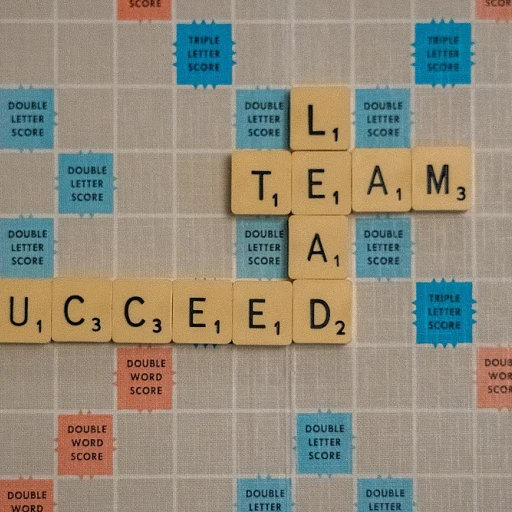
Understanding the Importance of Rewards in a Clinical Setting
Rewards and recognition hold a pivotal role in the healthcare setting. A well-devised reward system contributes to maintaining a motivated and engaged employee base, directly impacting patient care and safety. The essence of such programs resides not merely in appeasing staff members, but in crafting a culture where employees feel genuinely valued and supported.
Healthcare workers, amidst their demanding roles, benefit significantly from recognition programs tailored to appreciate their hard work and dedication. When team members are regularly acknowledged for their contributions, they are more likely to feel an increased sense of belonging and motivation, which ultimately enhances their performance.
Organizations thriving in employee engagement often employ diverse strategies—including monetary and non-monetary approaches, individual preferences in mind—to sustain a high-performing workforce. At the core of these strategies, recognition ideas, such as peer recognition and utilizing social media channels to celebrate milestones, resonate well within the healthcare community.
A crucial part of this process involves understanding what types of rewards are most effective in recognizing healthcare employees. It is not just about distributing gift cards or bonuses, but about fostering a teamwork-based culture where appreciation is a consistent theme. Aligning recognition efforts with professional development opportunities can further enhance the value perceived by the staff.
Ultimately, a robust reward recognition framework not only benefits the workforce but also strengthens the organization’s service delivery, reflecting positively on patient experiences. A well-executed recognition program is pivotal in nurturing an environment where every employee, from caretakers to administrative staff, remains committed to high standards of patient care and satisfaction.
Monetary vs. Non-Monetary Rewards
Monetary Rewards: A Direct Approach
Monetary rewards are often the first thing that comes to mind when thinking about employee recognition. In a healthcare setting, where staff members are constantly under pressure to deliver high-quality patient care, financial incentives can serve as a powerful motivator. These rewards can include bonuses, salary increases, or even gift cards. Such incentives not only acknowledge the hard work of healthcare workers but also provide tangible benefits that can improve their quality of life.
Non-Monetary Rewards: Building a Culture of Appreciation
While monetary rewards are effective, non-monetary rewards can be equally impactful in fostering a culture of appreciation and recognition. These can range from public recognition in team meetings to personalized thank-you notes. Healthcare organizations can also implement peer recognition programs, where team members nominate each other for outstanding performance. This approach not only boosts morale but also strengthens team-based work dynamics.
Balancing Both Approaches for Maximum Impact
To truly maximize rewards for top talent, it's essential to strike a balance between monetary and non-monetary rewards. A well-rounded rewards recognition program will cater to the diverse preferences of healthcare employees, ensuring that all staff members feel valued and appreciated. By combining financial incentives with meaningful recognition ideas, healthcare organizations can enhance employee engagement and support a positive work environment.
For more insights on maximizing rewards for top talent, consider exploring this comprehensive guide.
Tailoring Rewards to Individual Preferences
Personalizing the Reward Experience
In the realm of healthcare, personalizing rewards is essential to ensure they resonate with each individual. The diverse backgrounds and personal preferences of healthcare employees mean a one-size-fits-all approach is less effective. Understanding what motivates your team members requires actively engaging with them and listening to their preferences. Conducting surveys or informal conversations can be an excellent way to gain insights into their desires.
Implementing tailored rewards helps foster a culture of appreciation and recognition, enhancing employee engagement and satisfaction. For instance, some employees might prefer tangible rewards like gift cards, while others might appreciate more experiential rewards such as extra vacation days or team-based activities. Recognizing these differences and adjusting your approach accordingly will ensure employees feel valued.
Fostering a Culture of Reward and Recognition
A tailored reward system encourages healthcare workers to connect with their roles on a deeper level, benefitting both patient care and patient safety. It also reinforces positive behaviors and recognizes the hard work being done within healthcare organizations. By aligning rewards with individual employee needs, the organization establishes trust and support, drawing stronger performance from staff members.
Effective recognition programs demonstrate understanding and appreciation for employee contributions, reinforcing their importance within the healthcare team. Ultimately, when employees feel acknowledged for their efforts, they are more motivated to maintain high levels of performance.
For further understanding of refining compensation strategies to align with employee preferences, consider digging deeper into this comprehensive guide on the subject.
Implementing a Recognition Program
Establishing an Effective Recognition Initiative
Creating a recognition program is vital for a clinic to cultivate a culture of appreciation. Recognizing the hard work and dedication of healthcare workers is essential in fostering a supportive atmosphere within the organization. A well-structured recognition initiative should encompass various elements to motivate and acknowledge employees. Here's how healthcare institutions can effectively build a comprehensive program:- Define the Core Objectives: Determine the underlying goals of the recognition program. Whether it's to enhance employee engagement, bolster patient care, or improve overall performance, having clear objectives ensures alignment with the clinic's mission.
- Set Up a Structured Framework: A systematic approach helps in creating consistency and fairness when recognizing staff members. Decide if the program will be team-based, or target individual contribution, or a mix of both.
- Incorporate Various Recognition Channels: Leverage different platforms for acknowledgment, such as social media shout-outs, peer recognition moments during meetings, or formal ceremonies. This approach helps in reaching all employees and making them feel appreciated.
- Promote Diverse Recognition Ideas: Rewards don't always have to be monetary. Consider other forms like gift cards, additional paid time off, or professional development opportunities tailored to healthcare employees’ preferences. This adds variety and personal touch.
- Empower Leaders to Be Advocates: Encourage healthcare managers and team leaders to become champions of the recognition program. Their active participation and genuine acknowledgment of employees bolster an authentic appreciation culture.
- Regular Evaluation and Feedback: Continuously assess the reward system’s effectiveness by collecting feedback from staff members. Adjusting the program based on their input ensures it remains relevant and impactful, ultimately boosting patient safety and care.
Leveraging Professional Development Opportunities
Maximizing Growth and Opportunity
In today's dynamic healthcare environment, offering professional development opportunities is an impactful strategy to reward and motivate employees. This approach not only recognizes their hard work but also supports their career advancement within the organization. Healthcare employees thrive in a supportive culture where their ambitions are not only acknowledged but nurtured. Implementing development programs shows that you value staff members and are committed to their long-term growth. Consider options such as:- Educational Workshops or Conferences: Provide team members access to industry events or workshops relevant to their field. This keeps them informed of the latest trends and enhances their skill set, contributing to higher performance in patient care.
- Mentorship Programs: Establishing mentorship opportunities allows more experienced healthcare workers to share their knowledge with junior staff. This exchange fosters peer recognition and promotes a team-based approach to learning.
- Online Learning Platforms: Offering access to online courses facilitates continuous professional development. It empowers employees to learn at their own pace while balancing work and personal responsibilities.
- Internal Career Pathways: Clearly defined career paths within the health organization can motivate employees to aspire for internal promotions, driving employee engagement and loyalty.
Evaluating the Effectiveness of Your Reward System
Measuring Impact and Making Adjustments
Evaluating the effectiveness of the reward system in your clinic is crucial to ensure it aligns with organizational goals and enhances healthcare employee satisfaction. Regular assessment allows for timely adjustments and fosters a culture of continuous improvement. Start by gathering feedback from team members on their experience with the rewards recognition program. Peer recognition can be a valuable source of insight into how well these initiatives are received. Additionally, tracking performance metrics, such as employee engagement and patient care outcomes, will help gauge the positive impacts of the program. Consider the following evaluation methods:- Employee Feedback: Conduct surveys to assess how employees feel about the recognition program. This can offer a clear view of its effectiveness in meeting their preferences and making them feel appreciated for their hard work.
- Performance Metrics: Monitor key performance indicators related to patient safety and healthcare delivery. A successful reward recognition system should correlate with improved staff performance and quality of care.
- Program Participation: Analyze participation rates in professional development opportunities and recognition programs. Higher participation can indicate a strong connection between rewards recognition and employee motivation.
- Social Media Engagement: If your program includes gift cards or events that can be shared on social media, an uptick in social media activity can reflect increased employee engagement and appreciation.












